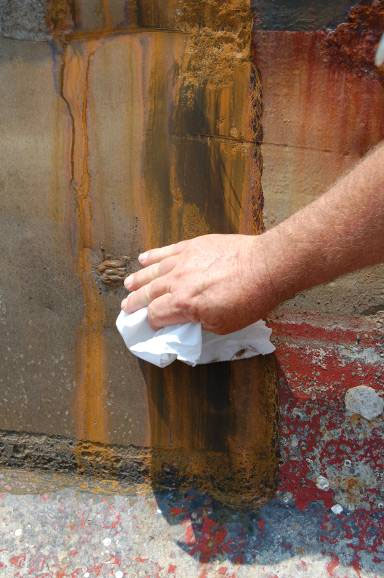A Primary Mission of the Council is to promote effective means of surface preparation in the maintenance industry using water and water/abrasive blasting techniques.
4.2 WORK NOTICE: The contractor shall post the notice at the ship’s quarterdeck or other designated location for each job or separate area at least four hours, but not more than 24 hours, prior to the start of work.
Checkpoints and final inspections shall be signed off by certified coating inspectors.
4.3.4 COATING INSPECTOR RESPONSIBILITIES: Coating inspectors are responsible for requirements listed in NSTM 631, Section 11.7.
4.13.2 Notify the Commanding Officer’s representative immediately when the contractor’s work is complete and the system, piping, or circuit is ready for activation to accomplish removal of tags.
Heavily rusted or corroded area, damaged metal and holes in the structure or piping shall be documented and provided to ship’s force and Responsible Contracting Authority to determine if further structural evaluation or NDT is warranted and for possible repair before surface preparation.
5.4.3 (Contamination Containment and Masking): Verify all surfaces within the scope of the project are IAW paragraphs 4.10 through 4.11.
6.3.2 Feather edges of adherent paint in adjacent areas remaining after cleaning.
9.3.3 All tests and inspections noting unsatisfactory conditions shall result in the termination and rescheduling of the checkpoint.
11.1.2 Coating imperfections found, which may cause premature coating failure, shall be corrected before the paint system is accepted using appropriate touch-up procedures specified in paragraph 7.12.
11.1.3 In order to pass the checkpoint, any Appendices required by the certified coating inspector shall be up to date or completed and submitted to QA.
[Download not found]











April 5, 2009
Comments Off on Work Notices and Inspection